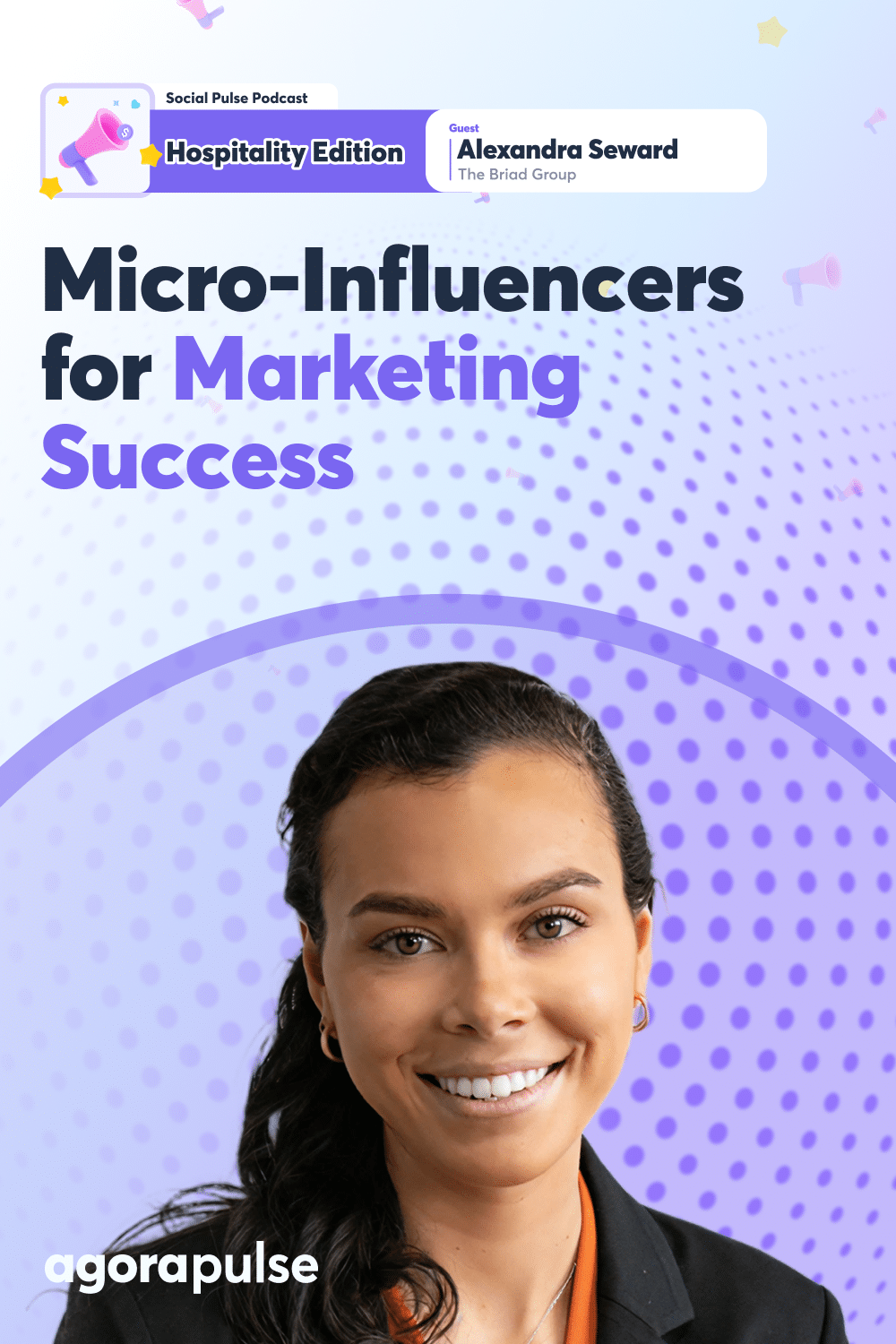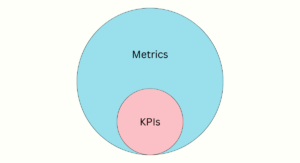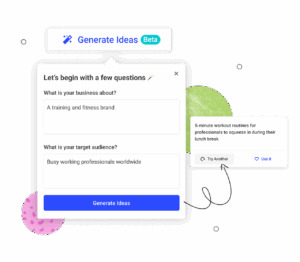The hospitality industry is at a turning point where authenticity is trumping celebrity status, and the most successful restaurants are completely re-imagining their influential marketing strategy.
In this recap of Social Pulse: Hospitality Edition, Alexandra Seward shares her real-world experience. She’s a digital marketing powerhouse who’s managed social media for over 50 restaurant brands and current social media leader for the Briad Group and former marketing strategist for Atlas Restaurant Group.
[Listen to the full episode below, or read along for the transcript of the Social Pulse: Hospitality Edition, powered by Agorapulse. Try it for free today.]
Share an example of a micro influencer campaign that, in your opinion, outperformed one of those celebrity partnerships that you might’ve had for your restaurants
Alexandra Seward: Absolutely. I can think of the biggest one. We had a grand opening for a new rooftop that we have in San Diego. It’s above a beautiful hotel, a very kind of popping area. It was on Fifth Avenue in Gaslamp. So we had a media night where we invited a variety of influencers. We had micro influencers with five to 10,000 followers. We had fitness influencers that’s a big thing in San Diego. We had a bunch of Padres players, Housewives stars. We had some celebrities from The Bachelor, a big group of them live in the downtown San Diego area.
And so after this event, we asked everyone to post the content. So we started to see all the posts coming in. And we started to compare and contrast, and the post that performed the best was from an influencer who lived in downtown San Diego, steps from our hotel, and she had 15,000 followers, and it was a beautiful video. She did a voiceover. It was a minute and a half long showcase, and the entire experience started to finish. It was unbelievable. It was so high quality, filmed on her iPhone. And then we had a Bachelor star with millions of followers and a Padres player with millions of followers, and they just did one little static post that they shortly deleted. Probably within two weeks of the event. And we were able to capture some engagement from that, but it didn’t nearly perform as good as that micro influencer. She was about 25, 26, just local in the area.
So that was very telling. I was blown away by her engagement compared to the celebrities.
Alexandra Seward: Totally. We look at The Briad Group through a bunch of different criteria. So the first is audience relevance.
I like to make sure that, are their followers, are they foodies? Do they live in the area? Do they like elevated dining experiences? How are their followers interacting with their food-targeted posts? That’s always very interesting to see the audience’s relevance. The engagement quality I want to see is the comments from both followers that are just like one little emoji, and it’s a fake follower, or are they full sentences, long, full conversations happening in the comments from real followers? Real engagement. That’s always important to see. I love to see the content style and evaluate that. Are they authentic, high-quality visuals that align with our restaurant aesthetics? I love to see a lot of Reels. Is this influencer only doing static posts? We’ll probably not work with them. If the influencer is doing voice-overs that are 30 seconds to a minute long. We love to see that. I also love to look at the location. Are these influencers? Do they have a strong presence in our restaurant’s target geographic area, our rooftops at The Briad Group?
We have the Concourse Club in Woodridge, New Jersey, about 30 minutes outside the city. And then we have the Bradford Rooftop, which is about an hour and a half outside of the city. So we do have a lot of them. New York City influencers are reaching out to us for staycation collaborations, which I’m actually very open to. We’re seeing a lot of staycation influencers reaching out to get out of the city, try something new.
But outside of that, we’re solely looking at influencers in our region because it just makes the most sense for us. I also like to look at. Personality. Are they fun? Are they funny? Is it real?
I also like to see their previous partnerships. I want to see if they have a track record of working with similar restaurants? Are they working with a bunch of chains? Are they working with beverage brands? For us, we’re very elevated. Rooftops we’re open at five o’clock. We’re closed Sunday, Monday, so we don’t want brunch, breakfast, or daytime influence.
We want the elevated nightlife, nighttime influencer. And we also like to see the audience demographics. It’s very interesting from the restaurant accounts. I love to see, do we have any mutual followers? Are we following some of the same? Tourism accounts for Visit New Jersey. Are we following New Jersey Digest some of those big media accounts? I like to see if we have any mutual followers there.
So that’s the criteria that we look at for evaluating these potential partnerships.
How are you structuring your partnerships? How are you approaching that relationship with these micro influencers?
Alexandra Seward: I think more than ever, transparency is key. I have now become almost over specific with all the clear deliverables that I want to see from influencers because I’ve made the mistake of not specifying what I want, and I get disappointed with the outcome of the quality of the content. You have to specify everything. Now, whether it’s a post, a static post versus a Reel, and how long the Reel is. I had an influencer once post just, it was like a ten-second video clip of a burger, and it just did not showcase the restaurant. The vibe, the ambiance at all, and it didn’t do anything for us.
So I like to specify the specific content formats first and foremost. Okay. We want a minute-long Reel. As well as a posting schedule because oftentimes these influencers have a bunch of brand deals that they’re working with or a bunch of collaborations, and your posts might get pushed to the bottom of their to-do list, so I want to make sure. Okay. Can this be posted within three days of your visit? Maybe a week. It all depends on your personal content calendar, but for me, I like to see the post go out within three to five days of the visit, specifying the tagging requirements for us. Our rooftop venues are located on top of hotels, so I want to make sure the influencer is always inviting both the hotel and the rooftop to collaborate. If we have a big chef that we want to showcase, tag the chef as well. This is all very important to specify, even as little as what dishes you want them to showcase.
So that kind of comes down to the compensation. I like to lay out the deals of their complimentary dining experience. For the most part, we’re working with influencers who want to collaborate for a free meal and the free dining experience, free brunch. So with that, you even have to specify how many dishes they have to get, and how many cocktails they have to get.
Please kindly tip your server, lay all that out there, because I’ve had the influencer walk in, try to order the whole menu, and just walk out without tipping your server. As specific as possible with the compensation. And then I like to look at the long-term relationship building, if it’s an influencer, where I’m excited about this partnership, and I want to see if we can collaborate on many events, holidays, girls ‘ night outs, whatever it is. I like to look at whether there are multi-visit opportunities rather than just a one-off post. And for us, we found this sister duo that’s based out of New York City, and we are like their go-to staycation collaboration destination. And it’s been awesome.
They’ve celebrated birthdays with us, now they’ve celebrated holidays, and they’ve done overnight stays at the hotel. So it’s been awesome, and it’s turned into an awesome partnership for us. And lastly, just the cross promotion, just to make sure that they’re always inviting you to collaborate, tagging, posting on all platforms, Facebook, TikTok stories, all that’s important.
So important to structure the clear deliverables upfront.
Do you ever work with multiple influencers at the same time, where you have them collaborate in addition to the brands?
Alexandra Seward: Honestly, I’ve never done that before. That’s actually not a bad idea because a lot of them are friends. Which I’ve found nice when we’ve had these media nights or grand opening events, they’re all friends, they all come together, they all hang out the whole night. They’ll grab a drink afterwards. So that is an area of opportunity for sure, to just invite a couple and do one big collaboration with several influencers. That’s a great idea.
Mike Allton: I stole it from Adobe. I took that from Adobe. It’s something that they do with their annual Adobe Summit. They’ll invite a cadre of influencers, they’ll pay for their travel, they’ll bring ’em out to, I think it’s Las Vegas. To their event. So a couple of years ago, it was folks like Goldie Chan, Leon, maybe Rodriguez, I think was there, and a couple of these are big names in marketing, right? It’s particularly B2B marketing, and they all know each other. And so they show up, and they all have the same events. They’re taking selfies with each other. And then most importantly, they’re interacting and engaging with each other’s social posts and tagging each other. So they’re all amplifying each other’s posts and Adobe’s posts. It’s a brilliant tactic. I’ve used it many times for Agorapulse. So you, everybody listening, definitely look at how you could bring in a couple different or three different influencers at once. Introduce ’em if they don’t already know each other and get ’em to collaborate with each other.
What’s the biggest surprise that you’ve discovered by working with micro influencers versus celebrities?
Alexandra Seward: Yeah. I think there are a lot of micro influencers who are willing to collaborate for free. They are interested in the dining experience. They want to try a new restaurant. They want to bring their friends, they want a free dinner. And a lot of influencers have these full-time day jobs where this is their hobby. It’s a separate account for them. It’s fun, and I often prefer working with these types of micro influencers as opposed to those whose sole job and primary source of income is their influencer platform that tries to charge you crazy rates, thousands of dollars for posts. So that’s probably one of the biggest surprises: finding the influencers who are willing to collaborate for free.
Also, it’s just better content quality. I found they produce more creative, authentic content than celebrities. They’re creating the content themselves. I have found some celebrities who hire outside content creators to fully source the content for them. I think also there’s just a level of relationship depth that you get with these micro influencers. They often build genuine connections with not only their followers but also the restaurant. They love to get to know the chef, they want to go in the kitchen. It’s a very real relationship that can come out of this partnership.
Also, the ongoing engagement. These influencers often continue to promote your restaurant organically after the partnership ends. I found this with so many influencers where they will come in for a visit and they’ll celebrate their birthday there several months later. They’ll continue to come back, they’ll come back for brunch. They’ll still tag you. They will still post just because they love the spot that much. Also, these micro influencers have a quick turnaround, and they can launch campaigns very quickly. There’s no need for any lengthy contract negotiations, and sometimes with these larger celebrities, they just take a while. It could be months before you see the actual content come out. And I found that you always have to follow up. And sometimes. Still never see the post. It just gets lost in translation and the shuffle of all their other brand deals that they’re working with.
Those are all big surprises that I found while working with these micro influencers.
How are you measuring success overall with these micro-influencer campaigns?
Alexandra Seward: Yep. So we use Resy for our rooftops, so I’m constantly looking at my Resy app on the backend, and I can see reservation spikes after campaigns go live. Oftentimes, the follower increases and impressions overall are the three big ones. We look at the new menu performance as well. So we’ll notice if an influencer is talking about one dish in particular, or one cocktail in particular, the sales for those specific dishes will go up tremendously.
We’ll also look at just website traffic analysis on the backend. How many clicks? Website taps, and I’ll always follow up with the influencer afterwards to send us a nice recap of the analytics from her end and compare that to ours. And I think the follower increases and the reservation spikes are the big ones that I notice. I’ll track those, I’ll benchmark those, and take note for future influencer visits. And it’s nice to compare and contrast with a bunch of influencers that you have in and see who’s performing the best, but it’s unbelievable the impact that they can have.
What are some common mistakes that you see other restaurants making when they’re trying to work with influencers?
Alexandra Seward: I have some friends who are also in the space, and I found that these restaurants are prioritizing follower count with these micro influencers as opposed to their engagement quality and the audience relevance. They’re looking at just the number of followers, and they’re not looking at the shares, the comments, the saves.
And that’s all super important to look at, and I will prefer the influencer with so many shares and saves over the influencer with hundreds of thousands of followers all day long.
I also find that these restaurants are providing just insufficient brand guidelines while still expecting very specific results.
So it goes back to the clear deliverables there. I find that restaurants are also expecting immediate results without allowing time for the content to perform. So I think restaurants get hasty, and they expect right away that they have to gain a hundred thousand followers after this post goes live. But it takes a minute, it takes five days for it to hit the algorithm. Maybe you boost the posts, see how that goes, but you can’t expect immediate results. And I think these restaurants get hung up on that. And I think they’re focusing too much on the short term with these collaborations as opposed to the long-term effects of the posts and the long-term relationships.
I especially find that with real collaborations that we do, which are at least a minute and a half long. We will find the followers come in slow and steady, but it’s slow growth there, but it’s worth the wait. Definitely.
Has that [unpolished iPhone look] impacted your influencer marketing strategy?
Alexandra Seward: Yes. So we have worked with amazing videographers and for horizontal website videos that have performed beautifully on our websites. However, with Reels and stuff. It looks too much like an ad. It looks too commercial. And we have found that users just aren’t engaging with the professional video. At least with our rooftops and hotels.
I think the iPhone just shows more personality. Like you said, it’s less polished. And I think the iPhone is just more at the moment. I love when influencers will post a bunch of Stories live in the moment from their iPhone tagging us while they’re taking that first bite of the burger, and we’ll get a lot of eyes on those posts solely just because it’s iPhone, it’s real, it’s in the moment and it’s authentic.
So I definitely agree. The iPhone is just performing better. I’ve looked at other brands, done some research, and I’ve looked at the likes I’ve scrolled down, and there’s not a lot of likes going for these high-end videos. So I definitely think it’s worth it for the website for sure. But definitely not for Reels.
Learn wisdom and insights from hospitality experts in every episode of Social Pulse: Hospitality Edition.
Alexandra Seward: Yeah, there is a lot going on, so I very much simplified my resources that I’m using.
- Hey Orca is an amazing newsletter that I get emailed every week. They also have weekly webinars where they’re always talking about the latest app updates. They’re talking about trends, they’re talking about everything. So that’s an unbelievable resource, Hey Orca.
- I also attended the Social Media Marketing Summit in New York City last year, and they had a bunch of speakers, and it was in person. It was amazing. A great variety of speakers from different brands and industries, but they definitely touched on influencer marketing a lot in AI as well.
- And lastly, podcasts: The Marketing Happy Hour, the Influencer Marketing Lab, the Skinny Confidential, those are my three big ones, where they often have a lot of influencers, micro, macro celebrities that are always talking about social media. The trends, the dos and don’ts. It’s all great podcasts there.
Thank you for reading the highlights of this episode of Social Pulse: Hospitality, powered by Agorapulse.
Try Agorapulse for FREE today!
And don’t forget to find the Social Pulse Podcast: Hospitality Edition on Apple, as well as other editions like the Retail, Agency, and B2B.





